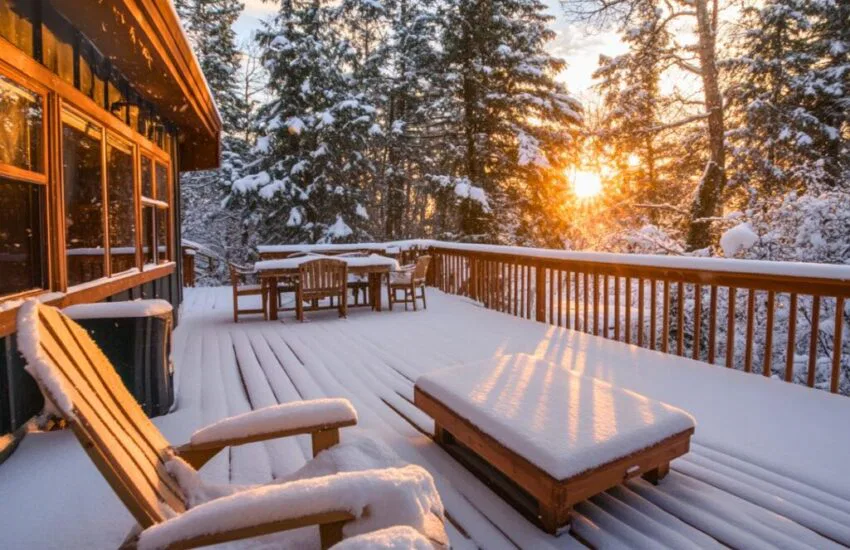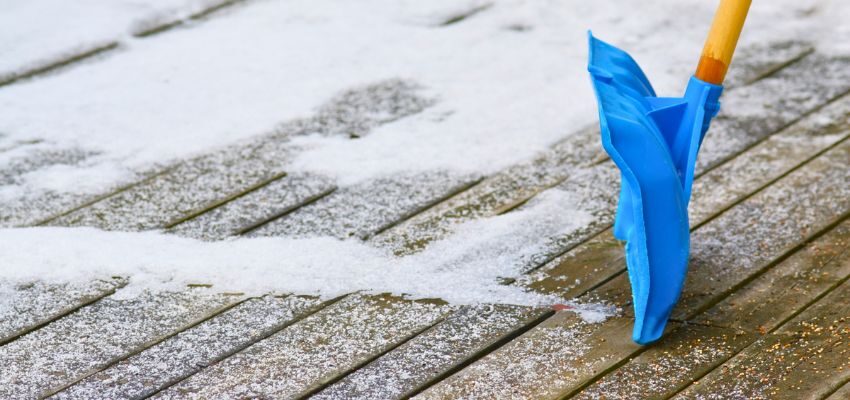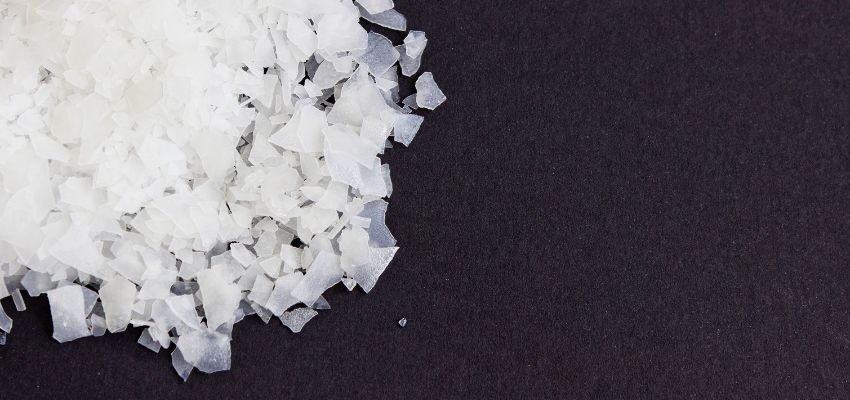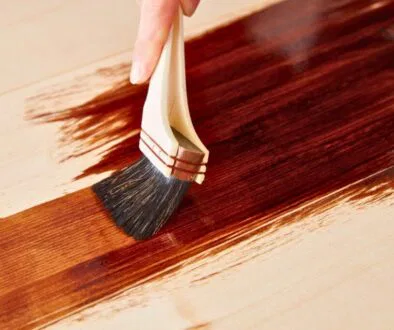Is It Safe to Use Ice Melt for Wood Decks?

Published on April 23, 2025
Is your wood deck prepared for winter? While a snow-covered yard may look beautiful, it can pose serious challenges for homeowners. Snow and ice create slippery, hazardous surfaces and can damage your deck’s wood over time if not properly managed. The key to protecting your deck this winter is choosing the right ice melt for wood decks and applying it the right way. Don’t let winter weather take a toll on your deck. Stay proactive and keep it safe.
In this article, we’ll explore recommended options for ice melt for wood decks. We’ll also look into DIY alternatives and expert tips for practical application. The aim is to ensure your deck stays safe, durable, and functional all winter.
How Does Ice Melt Work?
Ice melt lowers water’s freezing point, preventing ice from forming or breaking down existing ice into slush for easy removal. Most ice melts are made with salts like sodium chloride, calcium chloride, or magnesium chloride. Some use blends of other chemicals. Each type works best in specific conditions.
While ice melt is effective in winter weather, it’s essential to use it sparingly and choose the right type for your needs. Overuse or applying it on sensitive materials like wood can lead to damage, so proper application is key.
Is Ice Melt Safe For Wood Decks?
Ice melt is safer for wood decks than metal shovels, which can cause scratches or damage. However, traditional salt-based ice melts can harm the wood. They may seep into the pores, leading to warping, discoloration, or corrosion. To protect your deck, choose an ice melt solely designed for wood.
Why The Right Ice Melt Matters
Not all ice melts are created equal. Some formulas can dry out wood, while others may leave harmful residues. To avoid damage, steer clear of coarse or abrasive products and always select an ice melt specifically labeled as “wood-safe.” Choosing the right formula ensures your deck remains intact and protected throughout the winter.

What Ice Melt Is Safe For Wood Decks?
Choosing the right ice melt for wood decks is crucial to avoid damage while keeping your space safe in icy conditions. Here’s a breakdown of common ice melts and their impact on wooden decks:
Sodium Chloride (Rock Salt)
Sodium chloride, popularly known as rock salt, is effective at melting ice in moderate temperatures but becomes less effective below 15℉. However, it poses several risks when used on wooden decks. Rock salt can dry out the wood and cause discoloration; its sharp grains may scratch the deck’s surface. It’s generally recommended to avoid using rock salt on wooden decks unless necessary.
Calcium Chloride
Calcium chloride is highly effective in extremely low temperatures and melts ice quickly by generating heat. While it’s less harmful than rock salt, it can still accelerate wood decay, particularly in treated lumber like cedar or spruce. It’s recommended to use calcium chloride sparingly and with caution.

Magnesium Chloride
Magnesium chloride is highly effective as a deicer, working in temperatures as low as -13℉. It’s generally safe for wood surfaces; however, ingestion can cause gastrointestinal upset in pets. While it’s a solid choice for deicing, it’s important to ensure pets are kept away from treated areas to avoid potential risks.
Calcium Magnesium Acetate (CMA)
Calcium magnesium Acetate (CMA) is most effective as a preventative measure and works well in temperatures as low as 15℉. It’s eco-friendly, non-corrosive, and helps preserve the integrity of wood surfaces, making it an excellent choice for wooden decks. As one of the safest and most reliable options, CMA is highly recommended for maintaining wood surfaces in colder conditions.
Sand
Sand offers traction on icy surfaces but does not melt the ice. However, its coarse grains can scratch and damage wooden decks. To protect your deck, use sand sparingly or avoid it.
Pro Tip
For optimal results, choose CMA-based ice melts. These eco-friendly options are gentle on wood, highly effective, and perfect for homeowners looking for a safe, reliable solution to protect their decks during winter. It’s also vital to avoid salt-based ice melts, as they can cause damage over time.
Homemade Ice Melt For Wood Decks
Looking for a natural alternative to commercial ice melts? Try this simple, effective homemade solution using everyday household items:
- Combine two parts vinegar with one part water in a spray bottle.
- Add a few drops of dish soap to boost effectiveness.
- Spray the mixture on icy areas and let it work its magic as the ice breaks down.
Important Tips
- To prevent moisture damage, avoid saturating the wood excessively.
- Before applying the solution, test it on a small, concealed area to ensure it is safe for your deck.
- Wipe away any excess liquid promptly to protect the wood.
For additional traction, sprinkle sand, cat litter, or coffee grounds after applying your ice melt. While these won’t melt the ice, they’ll help reduce slipperiness and improve safety.
How To Safely Use Ice Melt On Wood Decks
Protect your wood deck from damage while keeping it safe and slip-free during ice weather. Follow these simple steps for effective ice removal:
- Clear loose snow first. Start by brushing off loose snow with a soft-bristled broom. Avoid using metal shovels or tools with sharp rims, as they may scratch or gouge the wood.
- Read the instructions. Always check the product label for application guidelines and any precautions specific to wood surfaces. Following these instructions ensures optimal performance and protects your deck.
- Apply ice melt sparingly. Sprinkle a light, even layer of ice melt across the deck. Overusing the product can create a residue that may stain or damage the wood over time.
- Let it work. Allow the ice melt to do its job. It usually takes 20 to 30 minutes. The ice will break down into a slushy consistency, making removal easier.
- Remove slush and residue. Use a plastic shovel or soft broom to gently remove the slush and any remaining ice. This step reduces moisture build-up, which can prevent refreezing.
- Sweep thoroughly. Finish by sweeping the deck to remove residual ice melt. This not only protects the wood finish but also extends the lifespan of your deck.
By following these steps, you can keep your wood deck safe and well-maintained throughout the winter season.
Frequently Asked Questions
Does ice melt damage wood floors?
Yes, chemical ice melts can harm wood floors by seeping into the surface, leading to discoloration, cracks, and warping. To prevent damage, wipe your shoes thoroughly after using ice melt on a deck to avoid tracking residue indoors.
What kind of ice melt is safe for wood decks and pets?
Choose ice melts containing CMA for a pet-friendly and deck-safe option. Avoid magnesium chloride, as it can pose risks to pets if ingested.
What can you substitute for ice melt?
Several household items can do the trick if you’re out of traditional ice melt. A DIY vinegar solution is a popular choice, but you can also use pickle juice, coffee grounds, or sugary liquids to combat icy surfaces. While these eco-friendly options are convenient and readily available, they may not perform as well in extremely cold temperatures.
What kind of ice melt is best for severe conditions?
Calcium chloride and magnesium chloride are effective in extremely cold conditions. Both stay effective even at very low temperatures. For everyday use, try CMA. It’s safer and protects wood surfaces.

Winter-Proof Your Deck: Smart Ice Melt Solutions For Wood
Dealing with snow and ice on your wood deck can be challenging, but it’s manageable and safe with the right approach. Choosing the appropriate ice melt for wood decks is key to keeping your outdoor space clear without risking damage. Homemade solutions can also be practical and resourceful for an eco-friendly alternative. You can protect your wood deck using proper application techniques and ensure it remains in excellent condition throughout many winters. Start preparing your deck today and enjoy a worry-free winter!
Is your deck ready for winter? At Vintage & Specialty Wood, you can learn expert wood care tips and techniques.
Hire The Timber Experts For Your Next Project
Vintage & Specialty Wood should be your source of the highest quality timbers from around the world. When it comes to fabricating and installing reclaimed wood or specialty wood products in your home, we don’t cut corners. We offer many reclaimed wood and specialty wood products such as Douglas Fir, white oak, and much more. We also offer timber framing and wood flooring services as well. Contact our team today to speak to a timber expert about what Vintage & Specialty Wood can do for you.

This Blog Is Fact Checked
This content has undergone meticulous fact-checking by our team of internal experts. Gain a deeper understanding of the high editorial standards we uphold on our website here.

About The Author
Experience, exploration, and knowledge are the hallmarks of writer Rei Bayucca. Her dedication to crafting articles that both inspire and educate will leave you thinking long after you’ve finished reading.




